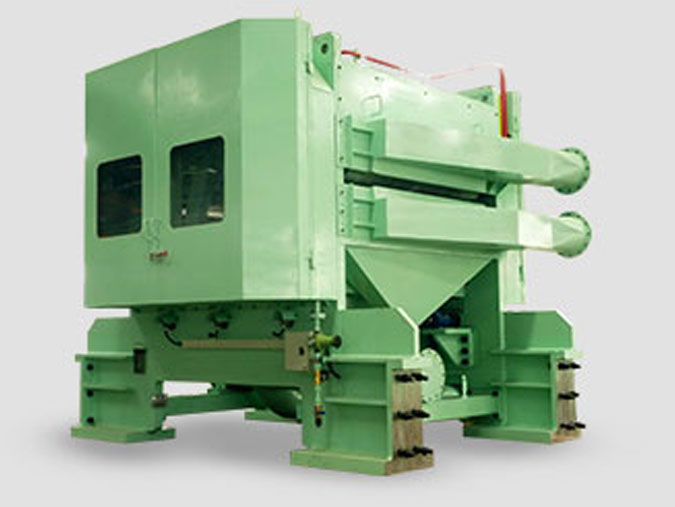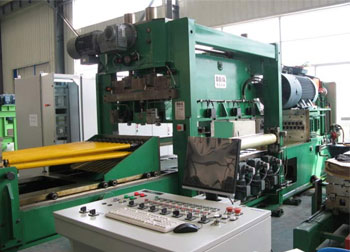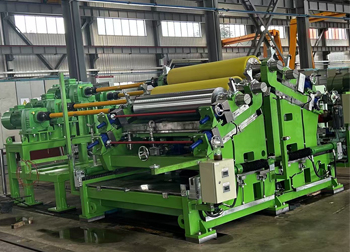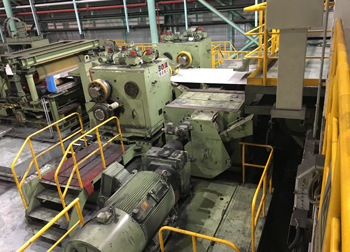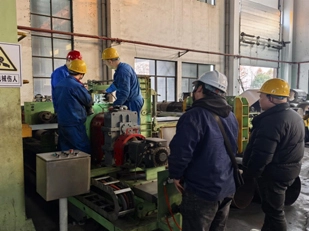Requirements for Tooling and Equipment in Fine Blanking Technology
Fine blanking requires the use of fine blanking dies
Stamping products obtained with general stamping dies have burrs, fracture bands, obvious taper, and lower dimensional accuracy, with a surface roughness of Ra 6.3-12.5 μm. When higher requirements are needed for the quality of the cross-section and dimensional accuracy of the stamped part, such as dimensional accuracy of IT6-7 and a surface roughness of Ra 0.4-0.8 μm, fine blanking methods such as side trimming, negative clearance stamping, top and bottom stamping, and gear pressing can be used for production. Trimming uses a trimming die to scrape off thin chips along the outer edges or holes of the stamped parts to obtain a smooth and vertical cross-section and accurate dimensions. In negative clearance stamping, the size of the male die is larger than that of the female die, and the direction of cracks during stamping is opposite to that of regular stamping, forming an inverted conical blank. When the male die continues to descend (note that it cannot enter the female die), the inverted conical blank is pressed into the female die, which is equivalent to the trimming process. The essence of this negative clearance stamping method is a combined process of blanking and trimming. Top and bottom stamping is the process of stamping the workpiece twice from the top and bottom with two male dies, creating two bright strips and removing burrs. Gear pressing is essentially the plastic deformation of the material under three-way stress during the entire stamping and cutting process, which suppresses the occurrence of cracks and tearing, and produces precision stamped parts with smooth cutting surfaces, small taper, and high dimensional tolerance grade. We call it fine blanking, or simply precision.
Fine blanking requires the use of fine blanking machines
The fine blanking process requires that the equipment provides stamping force, edge pressing force, and counterforce simultaneously, which is usually carried out on a dedicated fine blanking press. Ordinary presses generally cannot provide these three forces and their movements at the same time, and are also poor in terms of rigidity and motion precision, making them unsuitable for fine blanking unless certain technical measures are taken, such as installing mechanical or hydraulic devices to provide edge pressing force and counterforce, in order to achieve fine blanking on universal presses. The use of hydraulic devices to provide edge pressing force and counterforce can achieve pressure balance according to the process requirements during the fine blanking process, with convenient control. Therefore, the edge pressing force and counterforce for fine blanking on ordinary presses are generally realized by hydraulic force.
The gap between the fine blanking dies cannot be too large
A small gap is the main characteristic of fine blanking dies. The size of the gap and its uniformity around the cutting edge directly affect the quality of the cutting surface of the precision stamped part. The fine blanking gap mainly depends on the material thickness, as well as the stamping profile and the material of the workpiece. If the gap is too large, the cutting surface will tear. This is because when the gap is too large, the material in the deformation zone is subjected to a large tensile force, and tensile stress is induced, which is the reason for inducing microcracks and tearing. Therefore, the gap between the male and female dies for fine blanking cannot be too large.
The counterforce for fine blanking cannot be too small
The counterforce is an important factor affecting the quality of precision stamped parts. A larger counterforce can increase the compressive stress of the material in the deformation zone, suppress tearing cracks, and help improve the quality of precision stamped parts. However, a counterforce that is too large can increase the load on the male die and reduce the service life of the stamping die. A counterforce that is too small can affect the dimensional accuracy, flatness, burrs, and cutting surface quality of the stamped part. When the counterforce is too small, the taper of the precision stamped part is large, the surface of the stamping part is uneven, and it bulges in the middle. Therefore, like edge pressing force, it needs to be adjusted to the lower limit value in the actual process to ensure the quality of the stamped part.
The lap value for fine blanking cannot be too small
Because the gear pressing plate needs to press the material tightly during fine blanking, the lap value for fine blanking is larger than that for regular stamping. The design principles for fine blanking layout diagrams are basically the same as those for regular stamping. The correct selection of the lap value for fine blanking has a significant impact on the quality of the precision stamped part. Generally, the larger the lap value, the more beneficial it is for improving the quality of the cutting surface of the fine blanking, but it is not economical. Therefore, when selecting the lap value for fine blanking machines, the smallest value should be chosen to ensure the quality of the precision stamped product and achieve the maximum utilization value of the material.
Typical structures for fine blanking dies include active male die structure, fixed male die structure, and continuous fine blanking die
Fine blanking process requires precise stamping equipment for stamping force, edge pressing force, and counterforce. Therefore, fine blanking machines are generally used to mass-produce precision stamped parts, but fine blanking equipment has high investment costs. Therefore, many manufacturers use hydraulic frames to precision stamp parts on hydraulic presses. Hydraulic presses have low cost and are suitable for the production of precision stamped parts with multiple varieties and small to medium batches. However, their quality and production efficiency are relatively low, suitable for manufacturers of precision stamped products with low added value and relatively low requirements for product accuracy and production efficiency.
Topics You May Be Interested in:
Roll Coating Process
Backup Rolls
Precision Blanking
Conventional Stamping
Rubber Roller Coating Machine
Press Blanking
Popular BOYA Flat Metal Processing Machinery
Other Articles about BOYA Flat Metal Processing Machinery

 English
English 